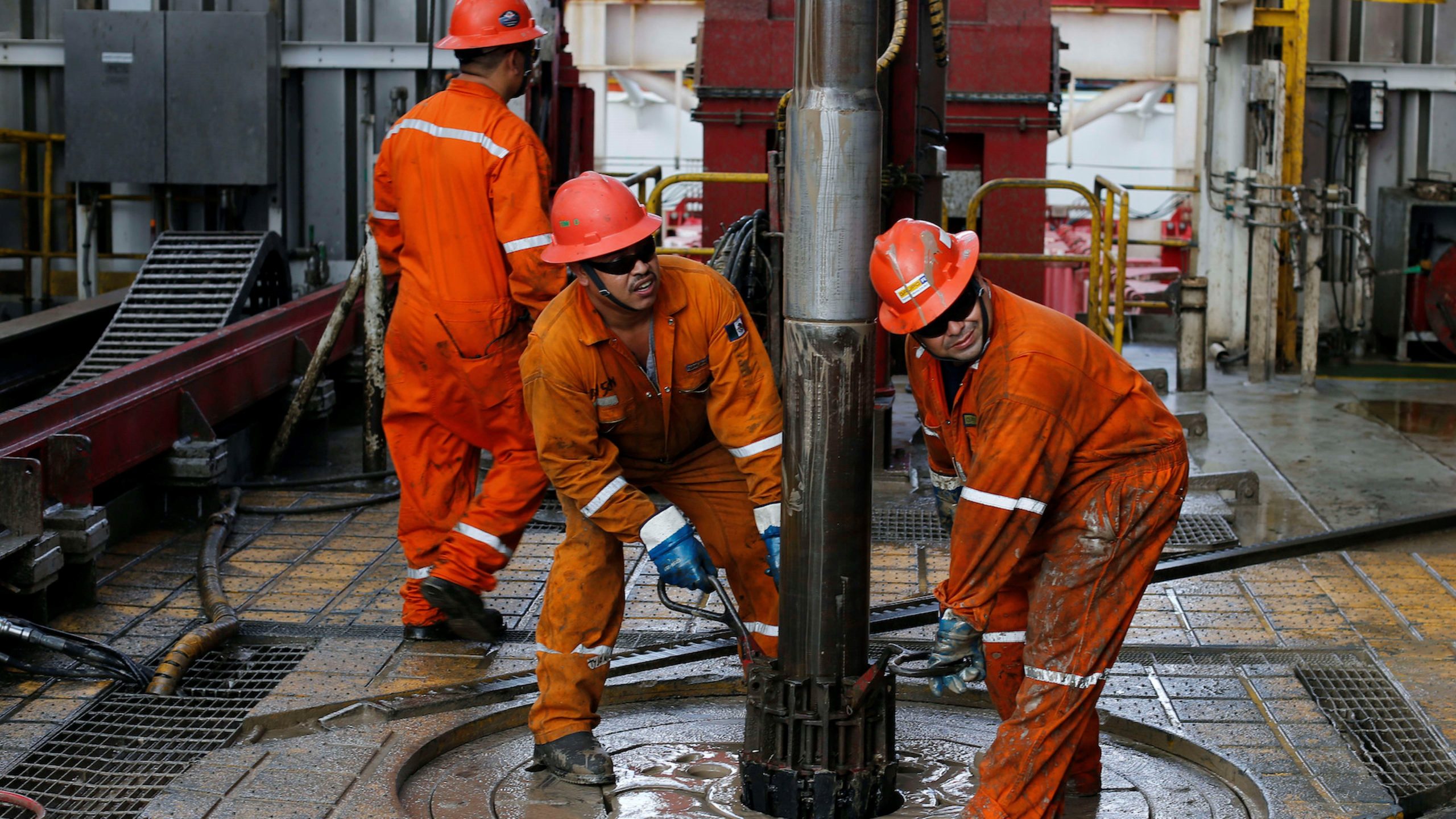Mexico is halfway to its clean energy goal. Politics could get in the way
Mexico is halfway to its clean energy goal. Politics could get in the way
Mexico is committed to having 43% of its generated energy come from non-contaminating sources by 2030. It’s at about 22% today, estimates IMCO.
Mexico’s taking control of its oil sector from U.S. and British companies is taught in schools and celebrated every year. The 1938 nationalization is a point of pride for millions of Mexicans including President Andrés Manuel López Obrador.
The popular president hails from the Mexican oil industry’s heartland, and 16 years ago he led a fight against energy reforms that were aimed at drawing private investment to the massive state-run oil company, Pemex. This year, the front-runner in the race to replace López Obrador chose the anniversary of Mexico’s oil expropriation to announce her energy proposals, which include maintaining large-scale petroleum production by Pemex.
Front-runner Claudia Sheinbaum also wants to make sure that the government-run Federal Electricity Commission, CFE, generates the majority of the power Mexico supplies to homes and businesses. Like the other two candidates to replace López Obrador, she only wants limited private energy involvement, but continuing to favor state-owned companies will make it harder for Mexico to meet its climate change commitments, experts say.
Despite Pemex’s struggles, Mexico continues to be one of the world’s biggest oil producers. None of the candidates are talking about reducing that. The Federal Electricity Commission has held the monopoly on electricity transmission and distribution since it was established by presidential decree in 1937.
Mexico is committed to having 43% of the energy it generates come from non-contaminating sources by 2030. Today about 22% of Mexico’s electricity production comes from clean sources, according to estimates from the Mexican Institute for Competitivity think tank, or IMCO.
The room for change in Mexico’s contribution to global warming appears to be in where the government monopoly gets its electricity and no participant in Mexico’s presidential debate Sunday discussed reducing Pemex production.
Gálvez did say she wants Mexico to produce half its energy from renewable sources within six years and that Mexico once again become known for cheap energy “thanks to private sector participation.”
Sheinbaum mentioned her climate science background and spoke vaguely of a need to reduce the emissions that cause climate change, advancing the energy transition and adapting to climate change. She also said a huge new refinery that López Obrador had built would help reduce Mexico’s gasoline imports.
Sheinbaum has pledged to continue to increase refining capacity at Pemex, hardly a recipe for a concerted move away from fossil fuels from a climate scientist-turned-politician. The 61-year-old former Mexico City mayor has also said she wants CFE to keep generating the majority of Mexico’s electricity, complicating the country’s stated desire to contribute less to global warming.
López Obrador pushed laws to give CFE plants preference over private renewable and natural-gas generating plants, even though many of the state-owned plants burn dirtier fuels like fuel oil, coal or diesel. The courts blocked the changes, so last year López Obrador bought 13 power plants — most running on natural gas — from Spain’s Iberdrola for nearly $6 billion, calling it the “new nationalization,” ensuring that CFE generates the majority of Mexicans’ electricity.
“It would be costly for her to move away from that official line,” said Oscar Ocampo, energy and environment coordinator for IMCO.
Opposition candidate Xóchitl Gálvez is the candidate for a coalition of ideologically different opposition parties. When she was a senator, she caucused with the conservative National Action Party, which had earlier pushed the energy sector reforms that forced a greater opening to the private sector.
In 2008, leftist lawmakers allied with López Obrador — the PRD’s 2006 presidential candidate — took control of both chambers of congress in an attempt to prevent votes on reforms. Those reforms opened the industry to private contracting in the service sector, but Pemex kept its monopoly over exploration, pipelines and gasoline distribution.
Gálvez has said says she wants to improve Pemex’s efficiency and profit and proposed closing two money-losing refineries. Longshot candidate Jorge Álvarez Máynez of the small Citizen Movement has also proposed closing two refineries.
Julia González Romero, a lawyer specializing in energy sector regulations with the law firm González Calvillo, recalled that she was taught in elementary school about the oil expropriation and said it’s understandable that the debate over public versus private in the energy sector is heated.
“It’s in the DNA of our politics to argue about how much the private part should participate in the sector,” González Romero said.
Sheinbaum wants the state-owned energy sector to expand into lithium production and geothermal electricity generation. CFE developed geothermal power generation years ago. In 2022, Mexico nationalized lithium mining and extraction, with a state-run company having exclusive rights to mine the metal used in electric car batteries and other devices.
She had said she wants an energy transition to be one of the “hallmarks” of her administration and spoken of leaving the door open to private energy companies. But Ocampo said there is “a fundamental difference in the magnitude of (the private sector’s) participation” in the candidates’ proposals.
Gálvez has said she prefers to rely on the private sector to drive renewable energy investments. The tech entrepreneur has also proposed Pemex pivot toward geothermal, but touts a proposal to make it easier for people to install solar panels on their properties across the country to access more affordable electricity.
She also wants to bring back the energy auctions that had opened the electric generation market to more private renewables companies, but which López Obrador suspended.
Climate-related policies went backwards under López Obrador, said Climate Action Tracker, which tracks countries’ pledges to limit warming.
“Mexico’s greenhouse gas emissions continue to rise – despite the brief dip caused by the COVID-19 pandemic – and are projected to continue increasing through 2030,” according to the independent scientific project.
Edgar Olvera, a 45-year-old Mexico City lawyer, said the private sector could bring more investment to exploit Mexico’s natural resources.
“But we know the money would be for the foreigners,” Olvera said. “It’s a very delicate topic, very, very delicate, because we know that the government also doesn’t do things 100% correctly.”
—Fabiola Sánchez, Associated Press
(17)



